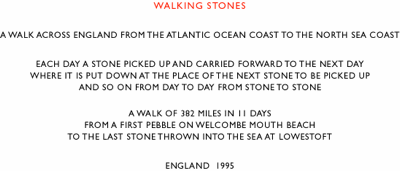Project 2
PROJECT 2
1 PROJECT 2 PROGRAMME
TUESDAY 13 OCTOBER (Avery Hill)
10:00 hrs
Project 1: BILLINGSGATE DOCUMENT – pin-up & group discussion.
14:00 hrs
Project 2: Introduction to PERCEPTUAL MODEL.
FRIDAY 16 OCTOBER (Greenwich Maritime Campus)
10:00 hrs
Tutorials – PERECEPTUAL MODEL and TELEHOUSE DOCUMENT.
MONDAY 19 OCTOBER (Site Visit)
10:00 hrs
Telehouse site visit.
TUESDAY 20 OCTOBER (Avery Hill)
10:00 hrs
Tutorials – PERECEPTUAL MODEL and TELEHOUSE DOCUMENT.
FRIDAY 23 OCTOBER (Greenwich Maritime Campus)
14:00 hrs
Tutorials – PERECEPTUAL MODEL and TELEHOUSE DOCUMENT.
TUESDAY 27 OCTOBER (Avery Hill)
10:00 hrs
Project 2: PERCEPTUAL MODEL – Year 2 pin-up & group discussion.
14:00 hrs
Project 3: Introduction to SPEED PLANNING.
FRIDAY 30 OCTOBER (Greenwich Maritime Campus)
10:00 hrs
Project 2: PERCEPTUAL MODEL – Year 3 pin-up & group discussion.
14:00 hrs
Tutorials – SPEED PLANNING.
2 PROJECT 2 EXPERIENTIAL MODEL
This short project is another method of reading the site. We are looking for a personal reading of the site, which is based on a particular experience of visiting the site. The project is for individual work and will be, we imagine, in complete contrast to the group document of Billingsgate (Project 1).
The task is simple, you are required to re-visit the site on your own and individually undertake the walking exercise that we agree with you tomorrow. As you undertake the walking exercise, do not try to analyse your actions. Rely on your senses (any way that you wish) to soak up the experience. From your personal reading of the site, you are required to construct an experiential model in any physical medium (this could be in any chosen built form, including models that generate sound and/or light).
3 REFERENCES
3.1 THE DERIVE
The dérive (translated as “the drift”) was a technique of spatial analysis practiced by the Situationists in the 1950s. Guy Debord described the dérive as “a technique of rapid passage through varied ambiances.”
The dérive drew on all the sensations experienced whilst drifting through a city to describe areas of that city by their psychological impact.
Debord’s Situationist map of Paris, the “Guide Pychogéographique de Paris”, shows Paris as a series of experiential zones connected by the flow of the dérive.
As shown on this map, Careri states that “the city has been filtered by subjective experience, “measuring” on oneself and in comparison with others the affections and passions that take form by visiting places and listening to one’s own inner impulses.”

3.2 TEXTWORKS
Richard Long creates works of art based on walks taken through landscapes. He also creates records of such walks as “textworks”. Textworks describe a specific walking-based activity in a concise manner. Each activity will have a theme. Routes and methods are described. Observations and experiences are sometimes included too.

3.3 WEB
Guy Debord, The Theory of the Derive –
http://library.nothingness.org/articles/all/all/display/314
Richard Long – http://www.richardlong.org
3.4 BOOKS
Walkscapes – Francesco Careri, 2005
The Situationist City – Simon Sadler, 1998